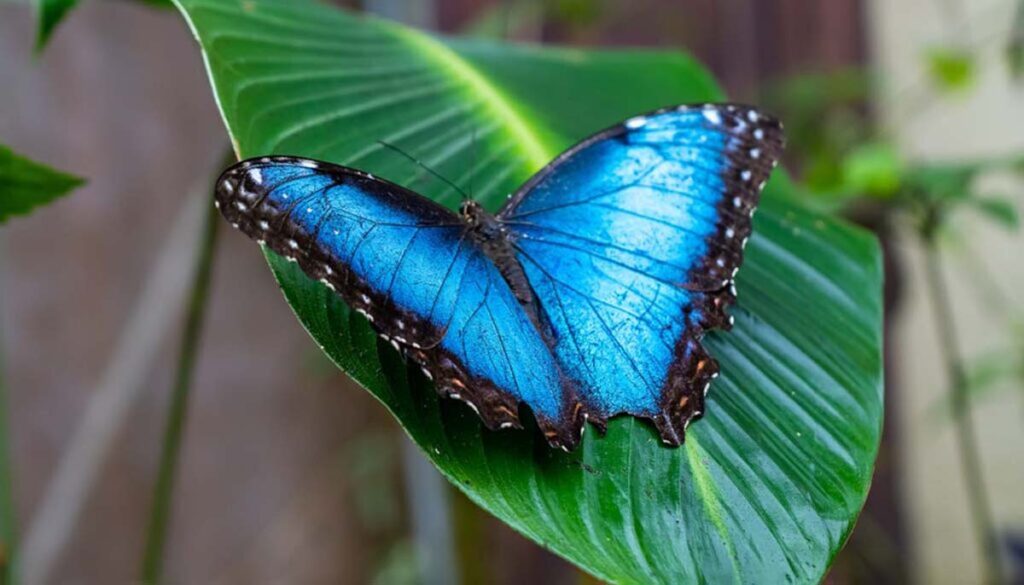If you’ve ever wanted to be cocooned in thousands of free-fluttering butterflies, now’s your chance.
As of today, there are about 200,000 species of butterflies in the world. A few varieties of these beautiful winged creatures have gone extinct, and more and more butterflies are becoming endangered. Frankly, there’s no time like the present to admire these wondrous winged creatures in real life, especially if you’re a fan of unbelievably gorgeous gardens. Come for the rare butterfly sightings, and stay for the bountiful spring flowers!
But first, let’s talk about where you should go.
These butterfly-loving habitats, museums, sanctuaries, and resorts are doing their part to give these lepidopterans the chance to thrive in every life cycle. Visitors are welcome to experience this in various ways. In many cases, guests are also given an eye-opening education about how good for the world butterflies actually are and can be, if protected.
Ready to go on an alarmingly magical stroll? Here are the most beloved and beautiful butterfly gardens in the U.S.
Grand Rapids, Michigan: Frederik Meijer Sculpture Park and Gardens

Frederik Meijer Gardens and Sculpture Park is home to the country’s largest temporary tropical butterfly exhibit. This exciting annual event runs through March and into early April. The extra special guests? 7,000 butterflies in a five-story Tropical Conservatory. You’ll be surrounded by waterfalls, winding streams, bountiful flowers, and some of the most unique butterflies on the planet.
They are imported as chrysalises from places known for their rare and vibrant butterflies, like Africa, Asia, and South and Central America. Once they hatch, they fly freely. In other words, you’ll be standing in the middle of it all. With a little exploration, you’ll encounter butterflies and moths at various stages of life and maybe even witness one emerge from its cocoon.
Coconut Creek, Florida: Butterfly World

This place is unique for a few reasons. For starters, it was the first butterfly house to open in the U.S. However, that wasn’t always the plan. In the 1980s, Butterfly World began as one man’s hobby. Ronald Boender, a retired electrical engineer, decided to raise butterflies in his home. It wasn’t long before he opened a commercial butterfly farm, selling and donating his butterflies to zoos, colleges, and research institutions.
By 1988, Butterfly World got off the ground. Today, you can explore its three acres of free-flight aviaries, an enclosed tropical rainforest, lush botanical gardens, educational exhibits, a museum, the research center, and an entire butterfly farm. And that’s not all you’ll see.
Keep your eyes peeled for rainbow hummingbirds, a “bug zoo,” and the lorikeet center. In one magical room, you can witness butterflies emerge from their chrysalises. Best of all, if you ask me, these butterflies are famed for frequently landing on guests’ hands.
New York, New York: American Museum of Natural History

This is one of the most popular annual exhibits on Earth. At the American Museum of Natural History, the seasonal Butterfly Conservatory stays open from September through May. And it’s genuinely spectacular.
Uniquely designed, butterflies are housed in a 1,300-square-foot vivarium tucked into one of the Museum’s galleries. Take the tropical plant-covered, winding pathway to the sealed-off, summery environment. You’ll forget you’re in the big apple pretty quickly, especially when you’re joined by 150 different species of butterflies.
Houston, Texas: Houston Museum of Natural Science

Cockerell Butterfly Center is built around a 50-foot waterfall, and it’s open year-round. Something you must see from the inside to believe, this three-story glass structure is actually a simulated tropical rainforest. It boasts diverse plants, vibrant blooms, and hundreds of colorful butterflies from all over the world.
If you get burnt out on butterflies, you can visit the crawl-through beehive built for humans, the gigantic insect models, and other immersive exhibits designed to help guests appreciate “a day in a bug’s life.”
Deerfield, Massachusetts: Magic Wings Butterfly Conservatory

Welcome to one of the largest man-made butterfly habitats in the country. Its mass might be impressive, but the winged beauties within really make the most of this space. It boasts an 8,000-square-foot indoor glass tropical conservatory with 4,000 exotic and domestic butterflies.
If you’re planning a visit, wear bright colors. The butterflies are prone to landing on those who stand out. And being mistaken for a flower can only be a compliment.
Denver, Colorado: Butterfly Pavilion

1,200 live butterflies and colorful moths call Wings of the Tropics home sweet home. Butterflies in every stage of life inhabit this 3,000-square-foot enclosed rainforest. One of its biggest selling points is the chrysalis viewing area. Somewhere between 600-1,200 chrysalises move in each week. The diverse varieties come from nine sustainable butterfly farms all around the world.
The likelihood of watching a butterfly emerge here is high. Above all else, others will undoubtedly be flying around you. Just time your trip accordingly. Every day, the butterfly release starts at 12:30 PM. Experts say if you want these winged wonders of the west to land on you, “wear red.”
Pine Mountain, Georgia: Callaway Gardens

About an hour south of Atlanta, you’ll find this flower-covered resort. Callaway Gardens is adored for its azalea-covered springs and golf. But it also has a must-see Day Butterfly Center. Open year-round, this tropical conservatory houses thousands of eye-catching butterflies from around the globe. Be on the lookout for emergence boxes during metamorphosis. They’re built into the conservatory’s glass walls for your viewing pleasure.
Newly emerged butterflies are released within the octagonal conservatory, joining exotic varieties of free-flying butterflies and tropical birds. Stroll amongst the butterflies surrounded by tropical flora and a 12-foot waterfall, and try to go in September. It’s known as Blue Morpho month, Callaway Garden’s most spectacular display of iridescent Blue Morpho butterflies.
Scottsdale, Arizona: Butterfly Wonderland

When you arrive in Butterfly Wonderland, make your way to the 3D theater, where butterflies virtually join you for a short film about a butterfly’s life. From there, you’ll enter the Butterfly Emergence Gallery, where you’ll witness live chrysalises transforming into butterflies before flying into the largest indoor rainforest atrium in the U.S.
This magnificent butterfly habitat is home to almost 4,000 happily-kept butterflies. Its famed 10,000-square-foot atrium is filled with fragrant flowers and lush plants. Butterflies might be the main event, but there are some other wondrous exhibits here, including an unbelievable “honey bee extravaganza.”
Los Angeles, California: L.A. Natural History Museum

In a local, national, and international league of its own, the L.A. Natural History Museum proudly houses 30 native North American butterfly species at the Butterfly Pavilion. Feel free to go all summer long. In this distinctive, ever-evolving ecosystem, these native beauties live their best-kept life in an ideal environment cultivated just for them.
Stop by the Monarch Waystation. From the egg stage forward, you’ll explore every stage of a Monarch’s fascinating life cycle, witnessing much of it happen in real time.
In this do-gooding butterfly garden, you’ll learn how and why the Lepidoptera population is being wiped out and how to stop it. You’ll also be given a rare opportunity to take a protected butterfly’s journey alongside them. For instance, have you ever wanted to build your own monarch habitat in an urban environment? Here, you can learn how to do just that.
Related: 9 Late-Blooming Flowers For Your Fall Butterfly Garden













